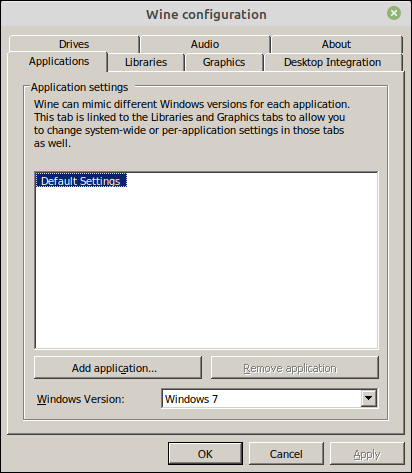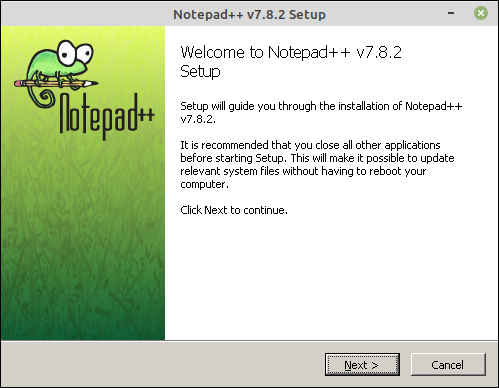Wine (stands for “Wine Is Not an Emulator”) is a free and opensource compatibility layer that allows a Windows application to run on Unix or BSD like operating systems such as Linux, FreeBSD, Mac, etc. Wine creates its own Windows runtime environment. It translates Windows system calls to POSIX compliant system calls. It recreates directory structures of windows and provides an alternate implementation to system libraries. There is no code emulation or virtualization occurs when running a Windows application under Wine.
Ahead in this article, we will install and use Wine in Linux operating system.
How to Install Wine In Debian/Ubuntu/LinuxMint?
There are various ways to install a package in Linux. To install Wine in Debian and its derivative through the command line. Use the following steps –
Installing Wine from official repository of wine
Official repositories usually provide updated and mainline software. If you want to install it from the official repository of wine use the following commands –
- First, check that your system is 32bit or 64bit by using the following command –
uname -p
If your system is 32bit it will display
x86else if your system is 64 bit thenx86_64will be displayed.If your system is 64bit, enable 32bit architecture by using the given command –
sudo dpkg --add-architecture i386
- Now download public key for wine repository –
wget -nc https://dl.winehq.org/wine-builds/winehq.key
- Next, add this key to the system using the below command –
sudo apt-key add winehq.key
- Now add the repository (In Ubuntu 18.04, LinuxMint 19.x) –
sudo apt-add-repository 'deb https://dl.winehq.org/wine-builds/ubuntu/ bionic main'
- Now use one of the following commands to install wine in your system –
- To install a stable version of Wine run the below command –
sudo apt install --install-recommends winehq-stable
- To install the latest development version of Wine run the below command –
sudo apt install --install-recommends winehq-devel
- To install a stable version of Wine run the below command –
- Verify the installation of wine by running below command –
wine --version
How to configure Wine settings?
To configure the wine application settings execute the following command –
winecfg
First of all, it will prompt you to install Wine Mono. Install it by pressing the on-screen install button.

Now, mono gets installed. Next, it will prompt you for the installation of Wine Gecko, install it also by pressing the install button-

The Installation of Mono and Gecko is a one-time process. After these get installed, You can close the wine configuration window by clicking on the ok button.

How to install a Windows application in Linux
Wine becomes more useful when there is a Windows app that doesn’t have a Linux equivalent. In this case, you can install that application on Linux by using wine. Suppose you want to install notepad++ application in your system then first you will have to download .exe file and then either double click on that file or right-click on it and then click on open with wine windows program loader. Now wine will start loading the notepad++ installer.

Now ahead the installation process will be very similar to that you see on the Windows operating system.

Wine Application Database
This is not necessary that an application for windows works perfectly on Linux. Wine provides its own database of applications. These can be run on Unix like operating systems by using Wine. The softwares on wine application database (AppDB), based on their compatibility are rated into three categories –
- Platinum – These applications run flawlessly out of the box
- Gold – These applications run with some modification necessary
- Silver – These applications run with minor issues that do not affect its usages
You may find some applications listed as garbage that means they do not install or run.
[alert color=”yellow”]Note: Remember that not every Windows app will run under Wine. The best thing to do is before installing an application you should check the current status of that app. This will give you a basic idea that how it will work on your system. [/alert]Conclusion
Now, I hope this article is useful to you. If you want to say something on this topic then write us in the comments below.
